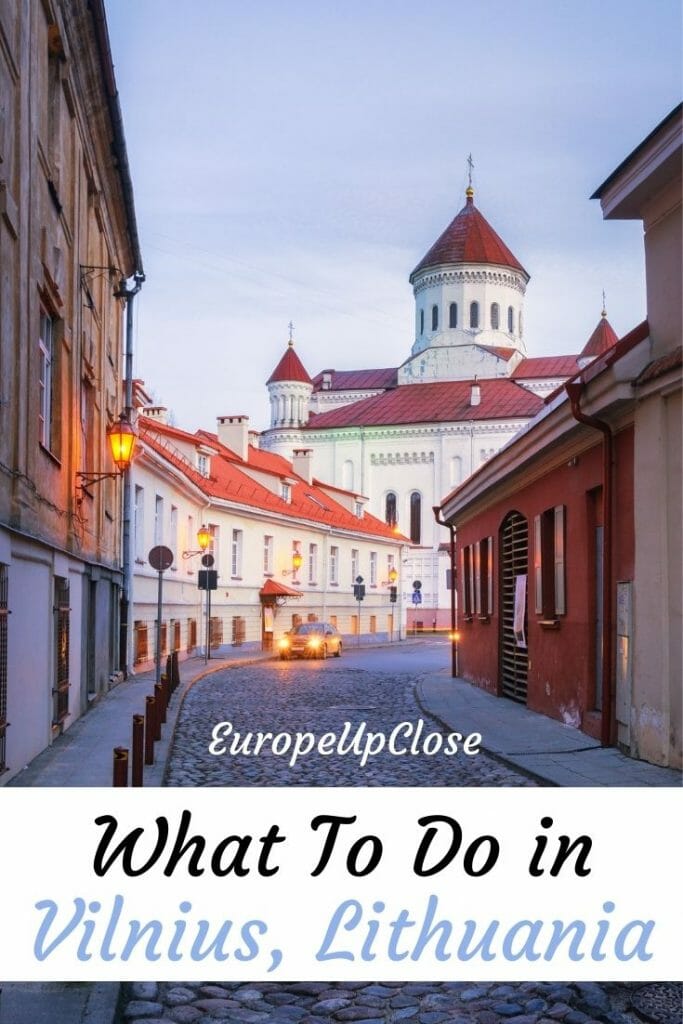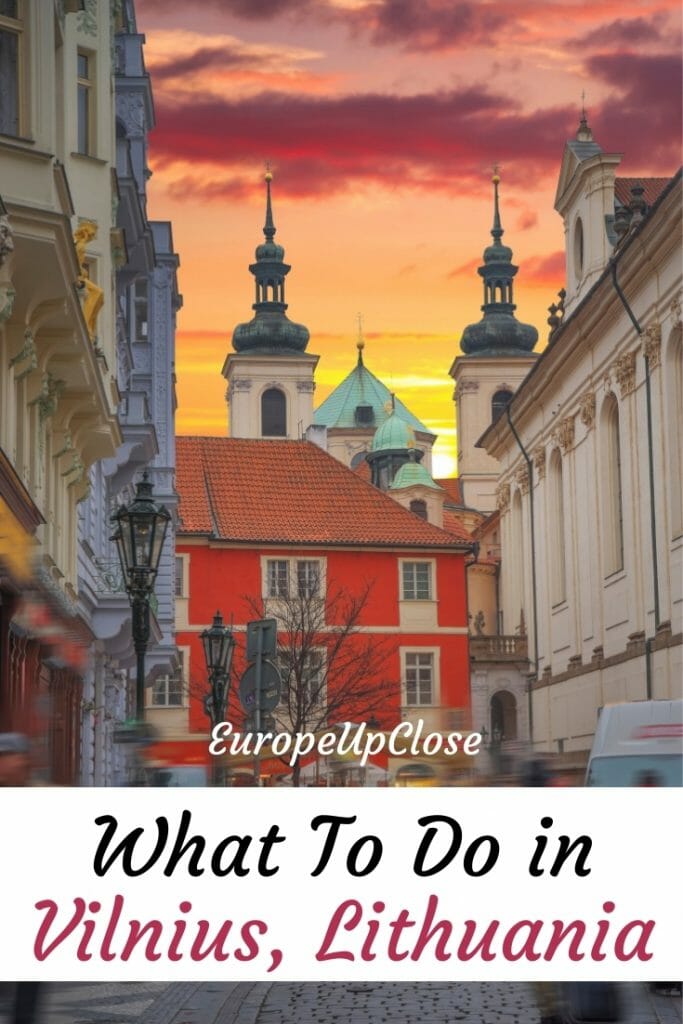The Baltic countries remain one of the most underrated destinations in Europe. And out of those three states, Lithuania is the least-known country. While many travelers visit Tallinn and Riga, only a few make it to Vilnius. Here are our tips on what to do in Vilnius and helpful tips and things to know before you visit the city.
Take advantage of this hidden gem and visit a beautiful city with stunning architecture, a vibrant history and lots of things to do in Vilnius. And the best of it? Even during high season, you won’t see as many tourists as in other European capital cities.

Vilnius has so much to offer that you can easily spend three or four days here. But even if you’re short on time and only have two days, you’ll enjoy this city. Let us show you everything that Vilnius has to offer with this two-day itinerary.
What to do in Vilnius – 2 Day Itinerary
Day 1 Vilnius Itinerary
Cathedral Square

Start your day right in the heart of Vilnius, at Cathedral Square. The legend goes that a pagan temple once stood here. When the grand-duke of Lithuania converted to Christianity, he decided to replace that temple with a cathedral.
The square itself is only around 200 years old. Before, the area was densely populated, just like the rest of Vilnius Old Town. While here, make sure to go into the cathedral. You can find more splendidly decorated churches in the Old Town (we especially liked the Orthodox Church of the Holy Spirit), but the cathedral is worth a visit to see the many graves of Lithuanian rulers and Grand Dukes. The oldest ones date back to the 15th century.
Gediminas Hill

From Cathedral Square, it’s only a short walk to Gediminas Hill. You have the choice between walking or taking a funicular. The hill isn’t very high, and the funicular ride takes less than a minute, but from the top, you have a great view of Vilnius Old Town.
On top of the hill, you will see old fortifications. Those are the remains of the Upper Castle. Gediminas, who ruled Lithuania as a Grand Duke in the 14th century, constructed the first castle in this strategic location.
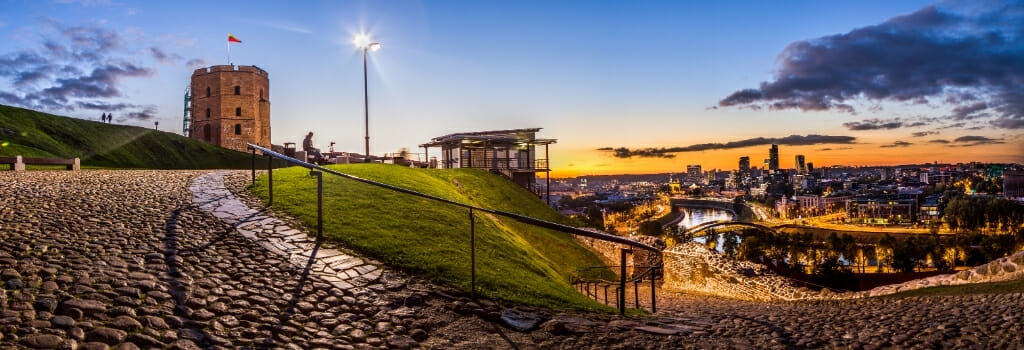
At the edge of the fortifications, overlooking the Old Town, you can see a tower. A Polish architect reconstructed Gedminas Tower in 1933, the only part of the building that got reconstructed until now. Inside, you can find an exhibition about old Vilnius and the history of the castle.
If you want to learn even more about Vilnius and its history, visit the Old and the New Arsenal which you can find just below Gediminas Hill. They house part of the Vilnius City Museum. In the Old Arsenal, you can learn about ancient history, while the New Arsenal is all about the Grand Duchy of Lithuania.
Old Town Vilnius
From Gediminas Hill, walk south to get into the Old Town of Vilnius. On your way, stop by the Presidential Palace. On Sundays, you can see a flag hoisting ceremony here. Going inside with a guided tour is free, but you need to reserve your spot in advance.
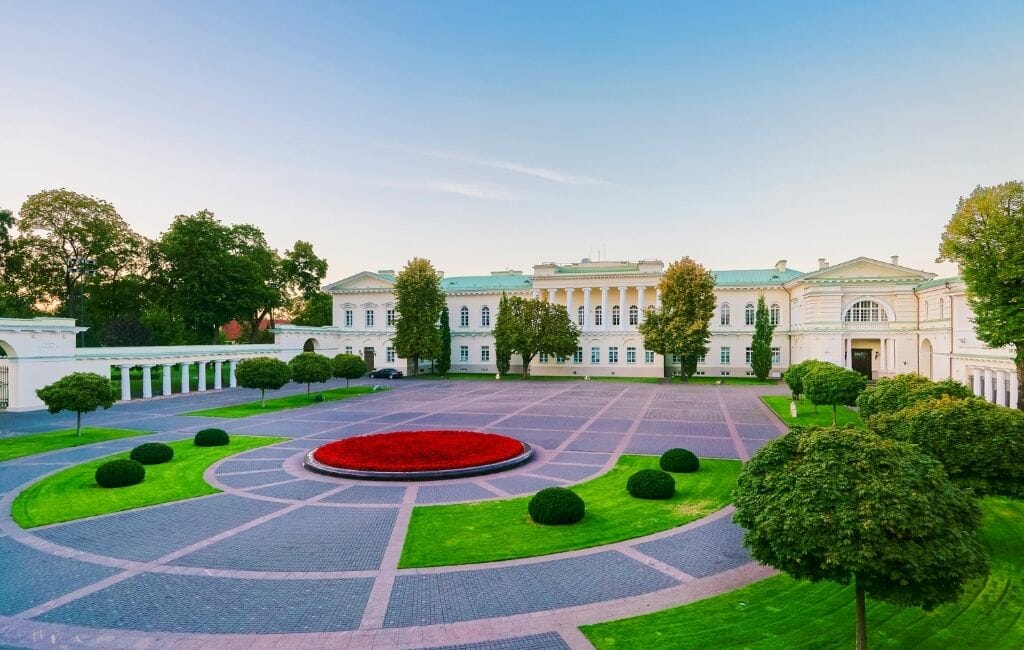
Your next stop is the University of Vilnius so that you can visit St John’s Church. If you want to, you can climb to the top of the Bell Tower. From here, you can once again enjoy Vilnius from above.
While walking through the Old Town, make sure to check out Literatų gatvė, Literature Street. This cobblestone street is famous for the many plaques on the walls, dedicated to authors from Vilnius. Literature Street is a great photo spot and also an excellent place to learn about Lithuanian literature.
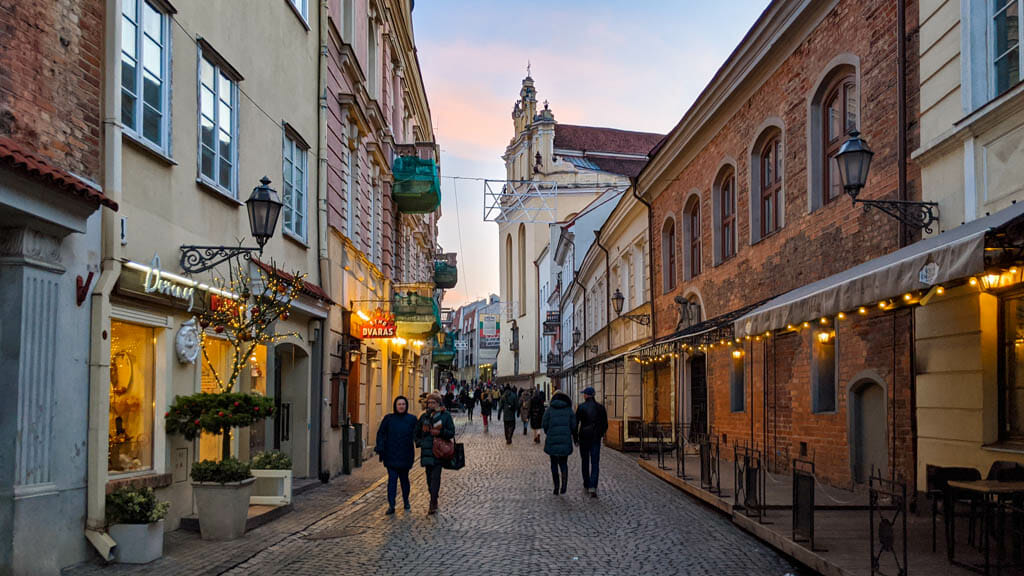
In the historic center of Vilnius, you will find lots and lots of churches – 28 to be exact. As already mentioned above, we recommended that you visit the Orthodox Church of the Holy Spirit. The interior looks stunning with its green iconostasis. Besides that, you can find many more churches worth visiting. Just keep your eyes open while walking around.
The Old Town is also a great place to buy souvenirs. Along the cobblestone streets, you will find many handicraft shops. In some of them, you can even watch the artists while they work, so the Old Town is perfect for finding authentic Lithuanian crafts.
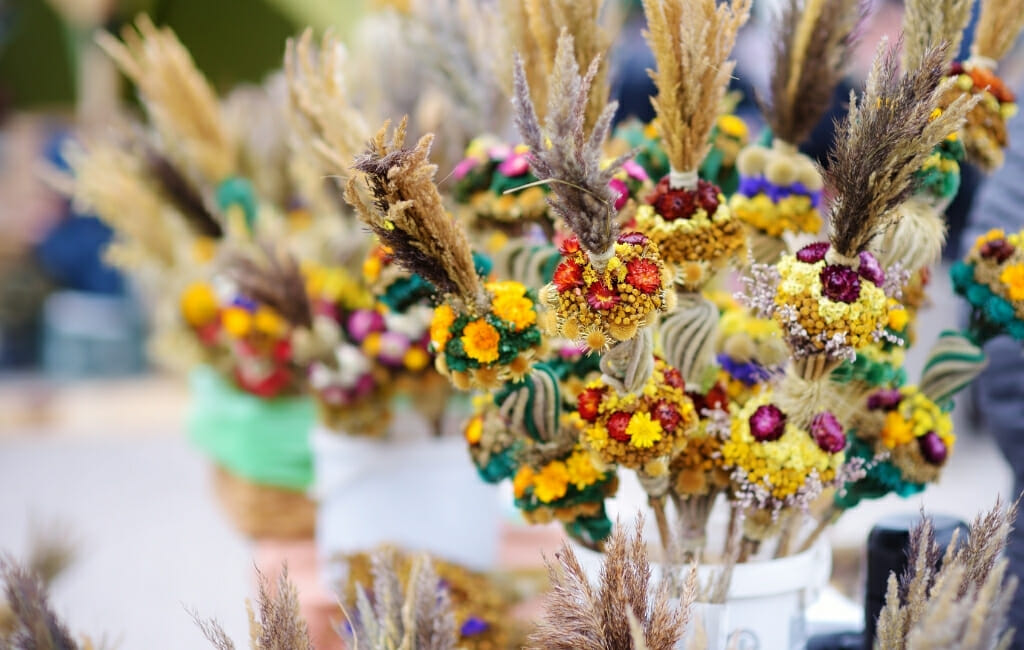
If you’re getting hungry, step into one of the many cafes and enjoy some baked goods and snacks.
Gate of Dawn
At the southern end of the Old Town, you will find the Gate of Dawn. This gate is the only one that remains from the City Wall that once surrounded Vilnius.
Today, the Gate of Dawn is famous for its painting of the Blessed Virgin Mary Mother of Mercy. This icon attracts pilgrims from not just Lithuania but all over the world. Initially, locals placed the artefact here to protect the city against attacks and to bless travelers.
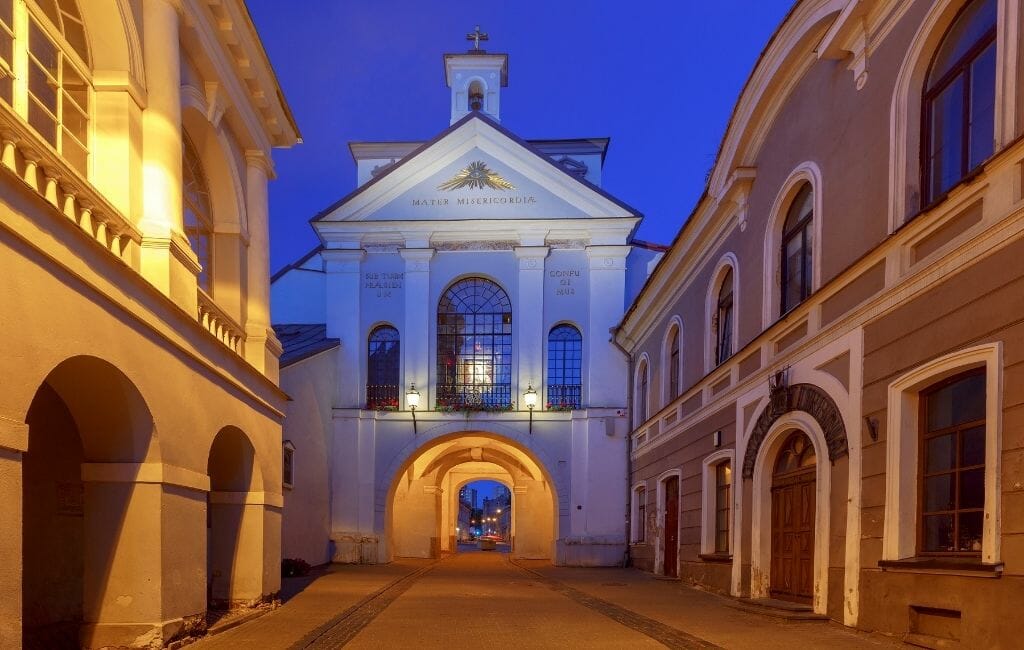
Make sure to go into the chapel where you can see the icon. Like in most churches in Vilnius, the ornate decorations stand out and make going inside worth it.
Republic of Uzupis
No visit to Vilnius would be complete without a visit to the Republic of Uzupis. This neighborhood on the other side of the Vilnia river used to be one of the most problematic areas in town. Crime ran high, putting Uzupis at the top of the Lithuanian crime statistics. Murders weren’t unusual, and the only people who moved here were those who absolutely couldn’t afford to live elsewhere.
Then, the Soviet Union collapsed, and people started seeing the potential of Uzupis. Artists moved in, the crime rate went down, and Uzupis transformed into one of Vilnius’ most expensive neighborhoods.

In 1998, local artists declared the independence of the Republic of Uzupis. Of course, nobody else recognises the neighbourhood as an independent country, especially since it started as an April Fools’ Day Joke. But that didn’t stop the republic from creating its own government, flag, anthem and constitution. For a while, Uzupis even had an army of 11 men, which eventually retired.
While walking through Uzupis, keep your eyes open to discover lots of fantastic street art. Along the roads, you’ll find cafes and art galleries.
Down by the river, you can see the Uzupio Kavine. This cafe also serves as a government building, and the parliament of the Republic of Uzupis meets here regularly.
Further uphill, you’ll run into the Angel of Uzupis, which is one of the nation’s most recognisable monuments. If you now turn right, you’ll see the constitution, translated into more than 30 languages.
Dinner at Etno Dvaras
Tonight, you should try Lithuanian food. Lithuanian cuisine, while not well-known internationally, is hearty, filling, and tasty. The best place to sample an assortment of local dishes is Etno Dvaras, a restaurant that specializes in Lithuanian cuisine.
As a starter, order Kepta Duona. Lithuanians love eating dark rye bread so much that they’ve transformed it into a delicious treat – fried breadsticks. You can find those all over Lithuania, usually served together with a beer in bars. In Etno Dvaras, they come with a delicious cheese sauce.
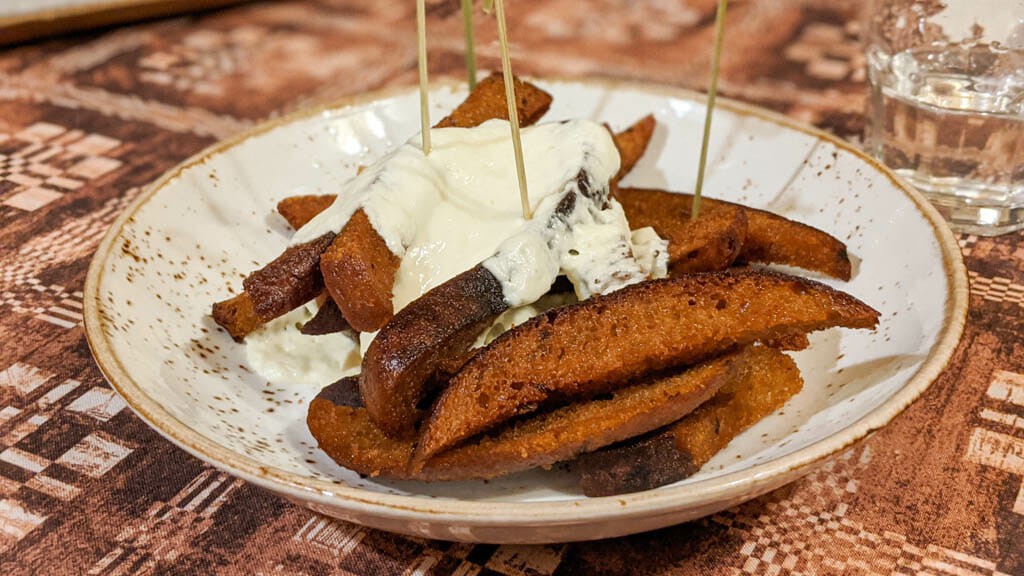
As a main dish, we recommend going for something with potatoes. Potatoes play a massive role in Lithuanian cuisine, and you’ll find it hard to discover as many variations elsewhere.
Try the Cepelinai, for example, potato dumplings shaped like zeppelins. They usually come with sour cream and locals often refer to them as Lithuania’s national dish. Or have some potato pancakes, made of grated potatoes fried in a pan. One of the more unusual potato dishes is the potato sausage, a sausage skin filled with mashed potatoes and bacon bits instead of meat. If you visit Vilnius in summer, you’ll enjoy the Saltibarsciai. This cold beetroot soup is perfect for hot summer days.
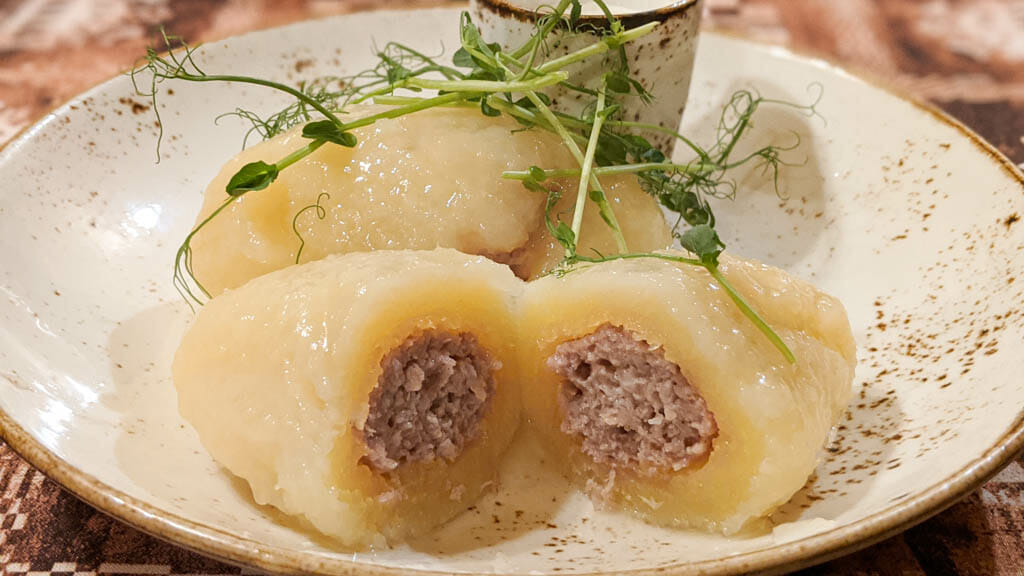
Day 2 Vilnius Itinerary
Trakai half-day trip
Start your second day early and hop on a bus to Trakai.
Buses regularly leave from the central bus terminal, right next to the train station, and you can buy your ticket from the driver. The ride takes between 30 and 40 minutes, and you’ll arrive at the bus station a bit south of Trakai.
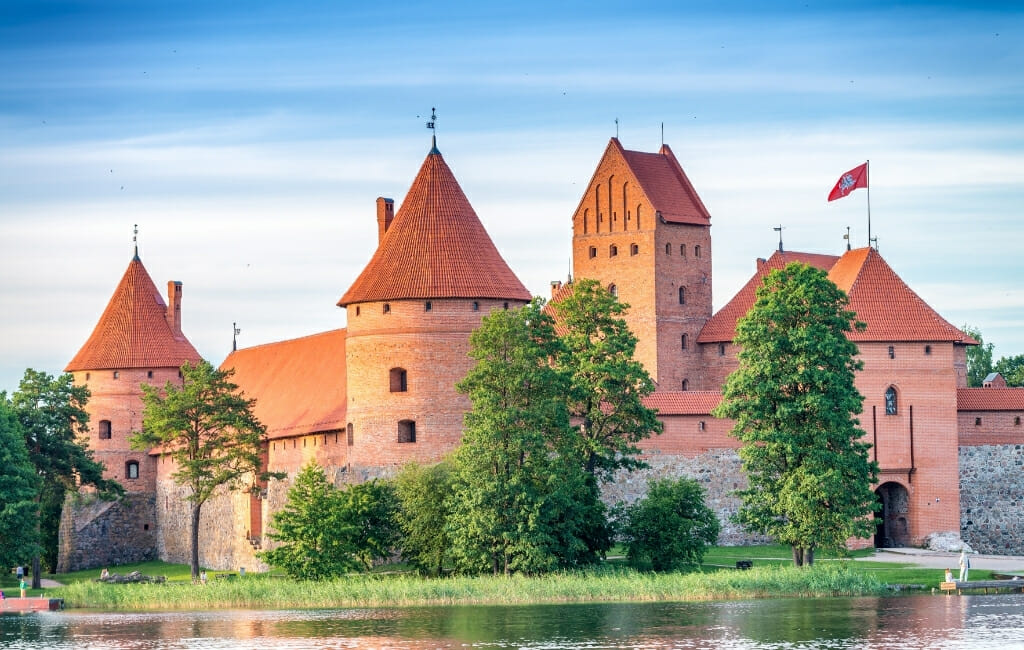
The town of Trakai is famous for two things. First, you can find the Trakai Island Castle here. And second, this area is home to the Karaites, a Turkish minority living in Lithuania.
Historians think that Grand Duke Vytautas brought them to Trakai in the 1400s as castle guards. Around 60 of them still live in the area, and this is the perfect place to learn more about their culture. You can find an exhibition inside the Island Castle, or you can visit the Karaim Ethnographic Museum in Trakai.
For centuries, Trakai played an essential role in Lithuania. While Vilnius was always the capital city, Trakai, with its Island Castle, served as an administrative center. Also, many foreign guests and diplomats stayed here.
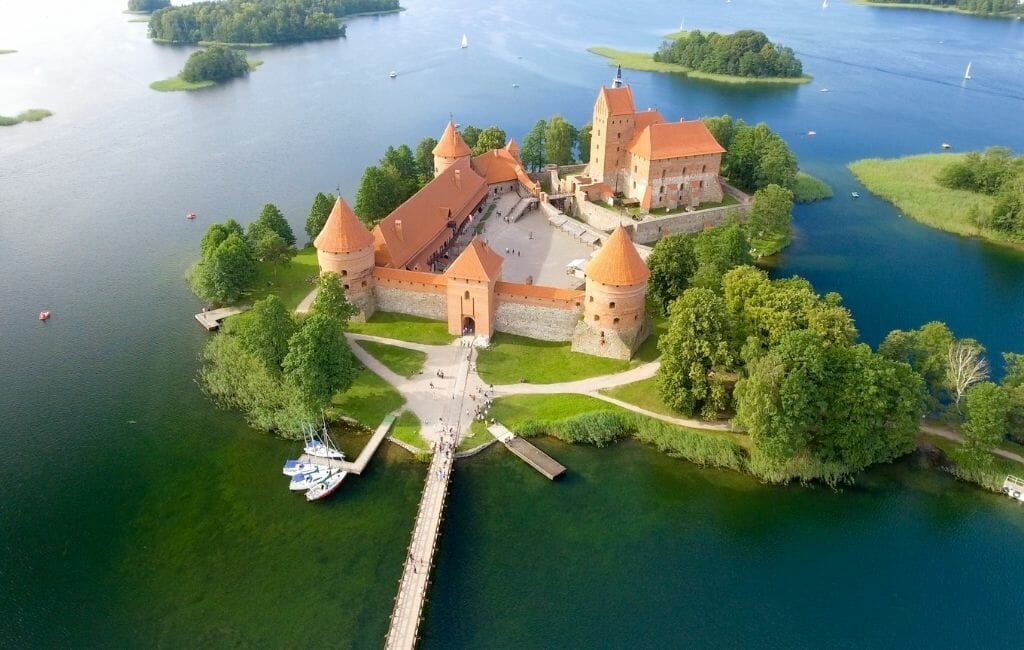
From the Old Town of Trakai, you can reach the castle via a bridge. The structure consists of multiple buildings, with the tallest one housing the most exciting exhibition. Here, you can learn everything about the history of Trakai and the Island Castle.
On your way out, you’ll pass a smaller building in which you can see a collection of artefacts that once belonged to the owners of the castle.
Be aware that you need to pay extra for permission to take photos on the castle grounds and that the museum is closed on Mondays!
Besides visiting the Island Castle and the Ethnographic Museum, you should go for a walk through the Old Town. Here, you can find many colourful wooden houses. If the weather is nice, stroll along the lake or take a boat ride across the water. After exploring Trakai, go back to the bus station and take a bus to Vilnius.
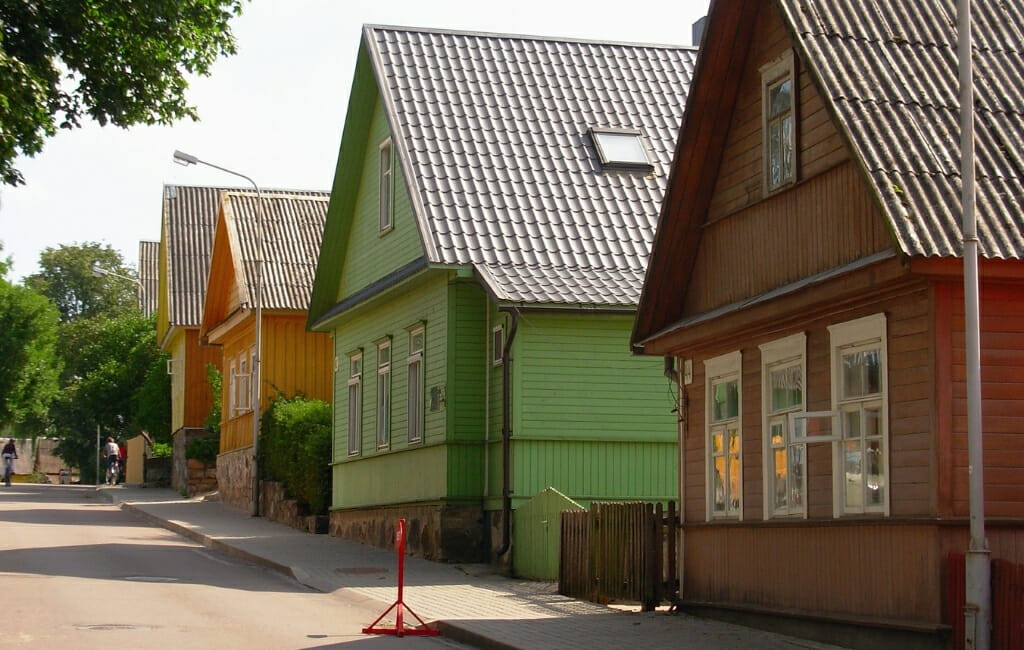
Museum of Occupations and Freedom Fights
In the afternoon, head to the Museum of Occupations and Freedom Fights, sometimes also called the Genocide Museum. You can find this museum in the former KGB headquarters, which, before the KGB, served as the Gestapo headquarters.
As you can imagine, a lot of grim history happened here. The basement used to serve as a prison, and we suggest that you start your visit here. Most of the cells are small and damp and staying here, especially in winter, must have been a nightmare. But some cells are even worse. The padded one, for example, with the straitjacket. If you got thrown in here, nobody would ever hear your screams.

Make sure to exit into the courtyard and cross into the execution chamber. Between 1944 and the 1960s, KGB officials executed more than 1,000 prisoners here.
On the upper floors of the building, you can find an exhibition about resistance to the Soviet Union. You’ll also find a small collection about the persecution of Jews in Lithuania. Some of the inscriptions down in the cells date back to the early 1940s when the Gestapo used the building.
Lithuanian Dinner
After leaving the museum, stroll down Gedimino prospektas. This street connects the museum to Cathedral Square, and you can find lots of shops here. Close to Cathedral Square, it turns into a pedestrian zone, and you’ll also see restaurants on both sides.
If you’re hungry, start looking for a place to sit down and eat. We recommend going once again for Lithuanian food. Maybe try some herring or cabbage rolls this time. Or switch things up and go to a bar, to eat fried breadsticks and wash them down with Lithuanian beer.
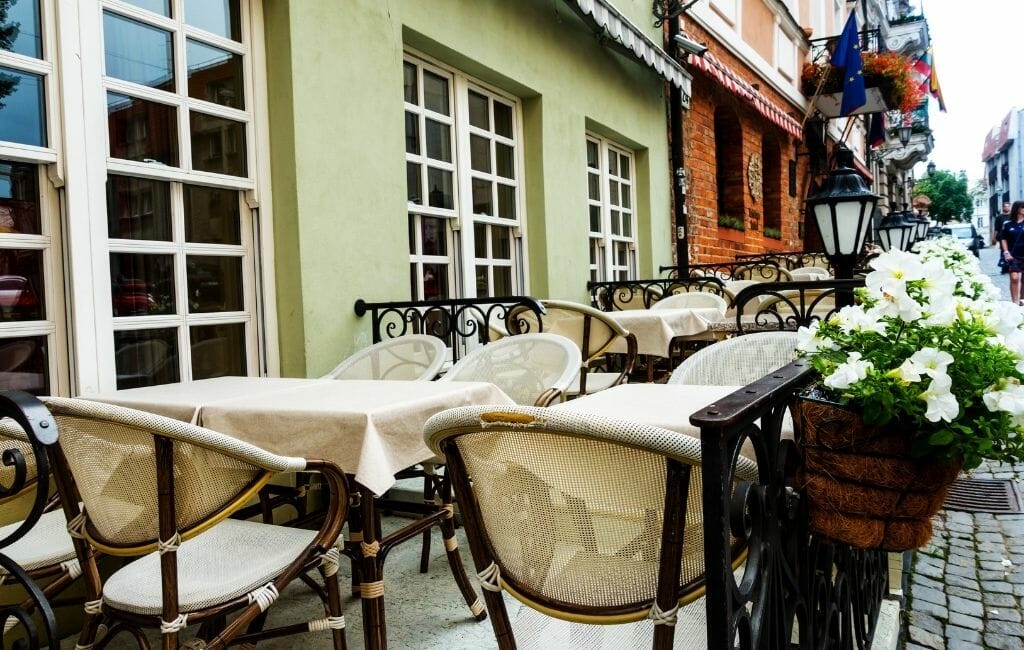
Helpful Tips for Visiting Vilnius
How to get around Vilnius
You can walk between most of the stops mentioned in the itinerary above. The Old Town of Vilnius is relatively compact, and it’s worth going on foot to take in the architecture.
If you get tired, you can catch either a bus or a taxi.
For going to the central bus station take bus number 2, which stops right behind Gediminas Hill. As an alternative, depending on where you’re staying, you should have no problem flagging down a taxi or walking.
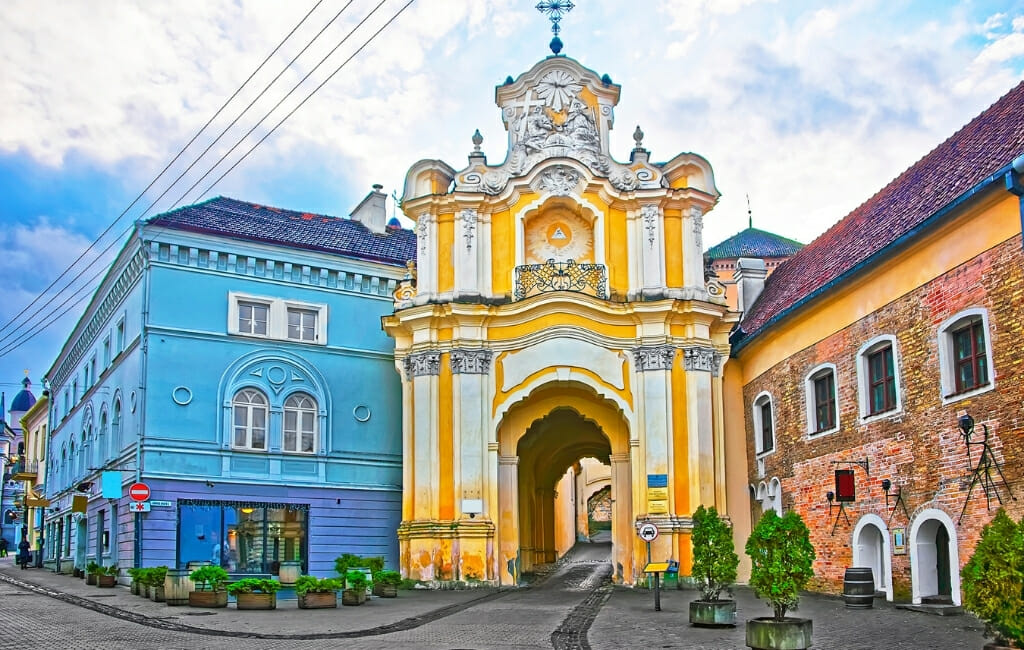
Best time to visit Vilnius
You can visit Vilnius all year long. Summer is a great season because you will experience good weather. Cafes place tables in the street, and the sun goes down late, so you can spend the evenings going for long walks along the water.
On the downside, you’ll run into lots of other tourists in summer. If you want to avoid the crowds, go in spring or autumn, when the weather is nice, but the city doesn’t get as crowded.
In winter, you will see almost no foreign tourists. That means you have most tourist attractions (almost) to yourself. On the downside, the weather can be wet and rainy. If you’re lucky, you will experience snow. Trakai looks incredible when the lake freezes over, and you have the chance to walk over the ice to the castle. And the Old Town of Vilnius is a spectacular sight with all roofs covered with snow.
What to do in Vilnius – 2 Day Itinerary & Helpful Travel Tips was written by Daniel and Ilona from Top Travel Sights. Daniel and Ilona met in Turkmenistan and kept traveling together. At the moment, they are based in Germany and spend as much time exploring Europe as possible. They especially like trying weird and tasty food and visiting lesser-known places. On their blog Top Travel Sights, they write about their experiences and share their best advice with fellow travelers. Check out their blog, Facebook, Instagram, and Pinterest.
What to do in Vilnius – Pin for later:
